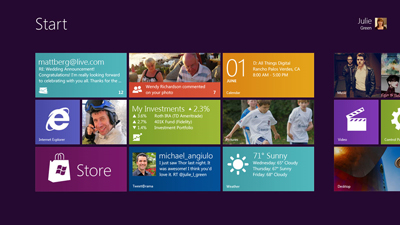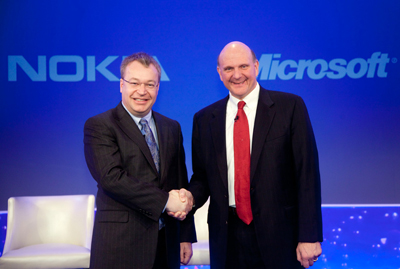In-Depth
3 Game Changers in Windows Phone 'Mango'
The cards have been stacked against Windows Phone 7 since the outset. Microsoft is betting big with the upcoming Mango update, but will these three factors be enough to swing the smartphone game to Microsoft's favor?
- By Scott Bekker
- June 15, 2011
We've maintained for several months that Microsoft is playing a long game in smartphones. Microsoft bought its way into the game with Windows Phone 7. (Yes, we know Microsoft developed Windows 7 internally and didn't buy it; humor us on the poker metaphor here).
But since the launch, Redmond's seen its chips dwindle as Apple and Google build upon their already gigantic piles. Last month, Microsoft Mobile Business President Andy Lees previewed Windows Phone "Mango," the next version of the mobile OS that Microsoft plans to release in the fall. What was clear from Lees' presentation is that Microsoft will go all in on the mobile market with the Mango release.
After Mango, Microsoft will either be a bona fide player at the smartphone table -- or have unequivocal evidence that it doesn't deserve its seat. What follows are three ways that Mango will either change the distribution of chips or force Microsoft to abandon the game. (Our money is on a new distribution of chips, with Microsoft sitting behind a sizable pile.)
1. Think Different About the Interface

|
| Windows Phone Start screen. Source: Microsoft |
Windows Phone 7 gave users a completely different interface for their phones. Was the icon interface of the iPhone or Android a problem? Well, it was to Microsoft, in that it was leading to wild market success and Microsoft didn't seem to feel it could make progress with a me-three design. It's not clear at all that users really have a problem with the Apple-Google icon paradigm.
Nonetheless, Microsoft's completely different tile-and-app design has been pretty well reviewed by critics, and seems to work very well for the few users who have adopted it so far. Microsoft is advancing that design with "Mango," and opening up the OS to allow app developers to provide more information in the tiles and access services and other apps across the phone.
Breaking out of the silos could be cool, no question. The issue there is that there are advantages to silos. If a siloed app breaks, that's all that's broken. When they're all interacting, it's a potential pandora's box of bloat, system performance and security issues. People are sort of willing to put up with that in the Windows desktop OS. In a phone? Probably not so much.
But the really huge change about the interface didn't come with Andy Lees' Mango presentation on May 24. In fact, it doesn't have anything to do with Mango directly at all. The next week, Microsoft unveiled the Windows 8 interface, and in addition to being the biggest change to Windows since Windows 95, it looked almost exactly like the tile-and-app approach of Windows Phone 7 and Mango. (See "Microsoft Partners Rave About 'Windows 8' Interface.")

|
| A screenshot of the "Windows 8" start screen. Source: Microsoft |
Here's the thing: Until early June, the Windows Phone interface was a weird little outlier in a world of icon-based phones. With Microsoft's plans for Windows 8, however, Mango becomes the release sporting the mega-mainstream interface.
2. A Nokia Handset
The Windows 8 interface is a huge structural reason for Mango to have a very good shot in the phone market. The other major structural reason is the Nokia deal. Nokia announced a huge shift in February -- abandoning plans for developing its own smartphone software platforms to put its handset development efforts behind Microsoft's platform.
What's new is that with the Mango unveiling last month, Microsoft announced that Nokia would have Mango-ready phones ready to debut with the Mango release in the fall. That represents a fairly quick turnaround for Nokia, and an opportunity for the Windows Phone platform to make some huge leaps and bounds in market share. The question, as it has been from the beginning, is whether the huge Symbian user base will follow Nokia to the Windows Phone platform.
And that's not just a question of user loyalty, which is a big enough question to start with. The other major issue is that the Nokia-Microsoft deal is the strategy of two of the most embattled CEOs in tech. Investors and tech pundits have been calling for Steve Ballmer's ouster for quite awhile, and even a Microsoft board member, Reed Hastings, declined to comment on Ballmer's status recently.
And Ballmer's position looks downright stable next to Stephen Elop's at Nokia. Nokia is not Elop's corporate culture; it's based in a different country, and it's in a branch of tech that he hasn't managed before. Between the layoffs and the rapid loss of shareholder value, Elop's position is beyond dicey. From the outside, it would appear that if Elop goes, the Microsoft-first strategy goes, too. If these two executives can hang on through the fall, though, look out.

|
| Nokia President and CEO Stephen Elop and Microsoft CEO Steve Ballmer at the joint Microsoft-Nokia partnership announcement. Source: Microsoft |
3. App Momentum
More than anything, the smartphone game is about apps. The days when people coveted their friends' devices because of the hardware are largely behind us. Now people look at each others' apps and figure out from there whether they are on the right platform. When developers look to focus their limited resources, they look at the two platforms where all the users are -- Apple and Google -- and that's where they develop. In that light, Microsoft's biggest struggle is, and will be, getting developers' attention. (See "Android Has Problems, But Microsoft Not in Position To Exploit Them.")
Microsoft has done fairly well so far among the also-ran group. Lees announced a good milestone in May, when he said Microsoft had reached 18,000 apps. Microsoft is probably close to 20,000 apps now. Turning Microsoft employees loose to make money from Windows Phone apps was a smart start. Smarter still is the focus on releasing tools to make it easy for developers to port their apps from Android and iPhone. You may not be able to beat those two platforms, but you can make it painless for developers to slide their apps across to Windows Phone. If it's easy enough, the question becomes, "Why not?"
But here's another reason that the Windows 8 UI announcement is so huge for Mango. If the platform is seen as a stalking horse for the entire Windows user base, Microsoft's lack of traction among phone developers could change very fast. The Mango release, shipping as test builds start appearing for Windows 8, could be the timeframe that developers start seriously targeting the Windows Phone platform.
There are some 500 new features in the phone, and many of them are intriguing, such as Live Tiles, Face Detection Software, Local Scout and Quick Cards. But the real reason to get excited about Mango is how central it has become to all of Microsoft's plans.
Related:
About the Author
Scott Bekker is editor in chief of Redmond Channel Partner magazine.